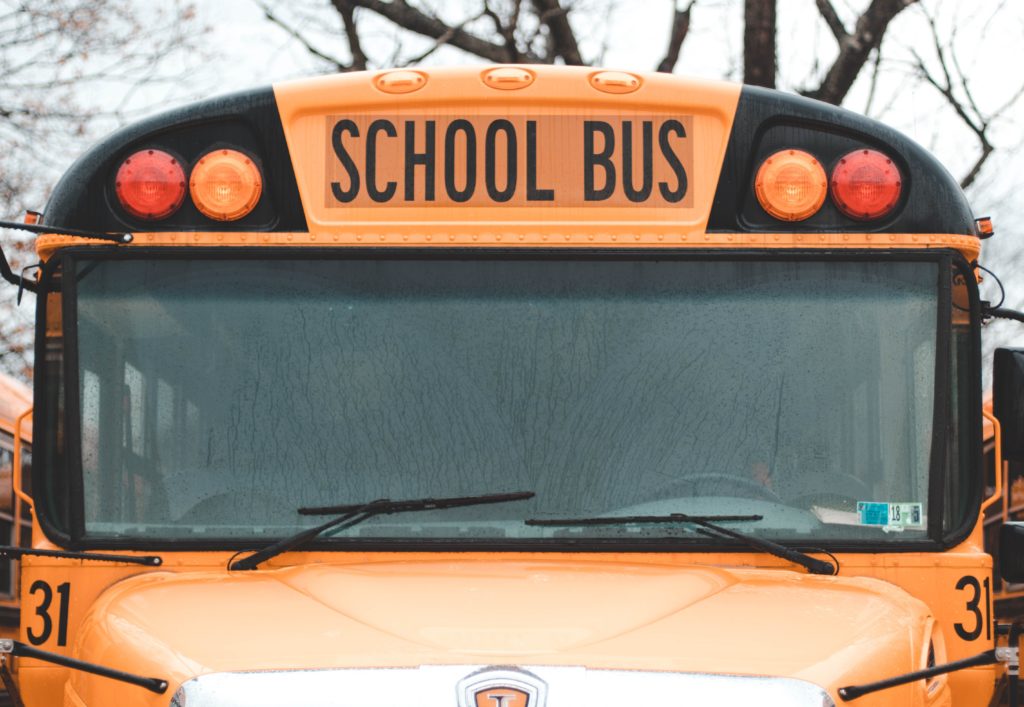
With back to school time approaching, soon some 25 million students will take the bus to and from school. While school bus design and laws work to make buses as safe as possible for kids, it’s important to talk to your kids about bus safety before the school year starts up.
Top School Bus Safety Tips for 2018
When it comes to maximizing your child’s safety while on or near the school bus, you’ll want to have a few conversations to discuss safety tips and appropriate behavior.
Teach your kids these important safety tips for at the bus stop:
- Wait at least 6 feet back from the curb
- Never walk behind the bus
- Always make eye contact with the driver and/or wait for the driver to signal before crossing in front of the bus. Even once the driver has signaled, check carefully for oncoming vehicles before crossing.
- Wait until the bus has fully stopped and the doors have opened before moving toward it
You should also talk about safety while riding on the bus, and why behaviors like standing up or yelling are dangerous. If your child’s school bus has seat belts, stress how important it is to buckle up, even though a parent may not be there to remind them.
Seat Belts for School Buses
Seat belts may or may not be available on your child’s school bus. States such as California, Florida, Louisiana, New Jersey, New York, and Texas require seat belts to be on school buses. These seat belts can greatly increase bus passenger safety, as shown in this simulation.
Your state may or may not require seat belts. If your state hasn’t yet moved to require seat belts on buses, consider advocating for this important safety measure.
Handling School Bus Safety Issues
Even with plenty of precautions, safety issues around school buses can and do occur. Depending on the issue, you may need to take different steps to find a solution.
If you notice unsafe driving at or around a bus stop, call the police immediately. If possible, try to capture photos or videos of the offending vehicle. Warn other parents about the issue and talk with the police about the action they plan to take.
If you learn of unsafe bus driver behavior, contact your school district. There is often power in numbers, so connect with other parents and continue working your way up the chain of command until your concerns are heard. It may help to have a specific idea of the action that you want the school to take. Follow up until you get results and feel that your kids are safe on the bus.
School Transportation Alternatives
Don’t forget that your child doesn’t have to rely on the bus every day. If there’s a safety issue that’s making you uncomfortable, or if the bus’s schedule just doesn’t work for your family, then GoKid may be the perfect solution. With GoKid, you can set up carpools with the parents of other children, so your kids will get to and from school, and you only have to drive part of the time. Plus, we’ve designed GoKid to help make carpools safe, so you don’t have to worry so much about your child’s safety on the road.
School bus safety is an important topic to review with your children every year. We wish your kids a happy and safe return to school!







0